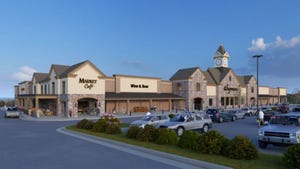Simplicity: Why does it have to be so hard?
Simplifying complex systems for American food retailers is job #1
May 16, 2019
Sponsored Content
Sponsored by Hussmann Corporation
It’s so simple: Consumers visit their local supermarket to buy fresh meats, vegetables, frozen foods and non-perishables, select them from a shelf or refrigerated merchandiser, go to the check-out or self-pay counter, and they’re on their way. Or perhaps they drop in at a convenience store or gas station, buy cold beverages and a frozen pizza, and off they go.
Their process seems simple.
What is not made apparent to them by design are the complex utilities that support these stores -- from electrical systems to power lights, sensors, computerized equipment, and security systems to highly sophisticated HVACR systems.
Operators of grocery, convenience, drug and dollar stores work hard to make it is easy for consumers to comfortably and conveniently do their shopping, hoping for their repeat business. Aside from profitability, their goal: Simplicity.
So, when it comes to the hidden systems they deploy in their stores and the benefits they provide on multiple fronts, why is simplicity so hard to achieve?
To quote Apple co-founder Steve Jobs, “It takes a lot of hard work to make something simple, to truly understand the underlying challenges, and come up with elegant solutions.”
The same can be said for food retail outlets.
For example, take the hundreds of thousands of refrigerated merchandisers in the estimated 236,000 grocery, convenience, drug and dollar stores across the country.
The U.S. Environmental Protection Agency estimates that the typical grocery store has a refrigeration system that is charged with 3,500 pounds of refrigerants, primarily R-404A, a hydrofluorocarbon (HFC) that contributes to global warming and climate change.
Few shoppers would know that those merchandisers, on average, leak about 25 percent or about 875 liquid pounds of their refrigerant into the atmosphere each year. The EPA says that, collectively, more than 206 million pounds of HFCs leak from U.S. food outlets into the environment annually.
So, the key problems with a store’s refrigeration system are (1) leaks and (2) emissions of a hazardous, climate changing refrigerant into the environment. That one-two combo has been silently happening for years and is the reason why the EPA is requiring the industry to scale-back on the use of HFCs.
The solution is challenging, yet as Jobs noted, effective simplicity is about mastering complexity.
To Hussmann Corporation engineers, scientists, and designers, the solution was to develop a refrigerated merchandizer system that doesn’t leak, and on the outside chance it did leak somehow, the refrigerant would be environmentally safe. Achieving that level of success is complex.
Yet, when digging deeper into the problems’ complexity, a simple solution began to emerge, resulting in the company’s microDS, a micro distributed refrigeration system that is charged with a tiny amount – just 150 grams or 5.3 ounces per circuit -- of propane R-290, which is non-toxic and environmentally safe.
Propane R-290 has a purity rating for use as a commercial refrigerant, and because of its thermodynamic properties, it is highly efficient in full store solutions. The micro distributed system also cut the amount of refrigerant required for typical full-store refrigeration systems by at least 95 percent, which also is a cost savings for store owners and operators.
And, when you factor in propane R-290’s global warming potential (GWP) of just 3 -- where the same volume of HFC refrigerant has a GWP rating of more than 1,350 -- the environmental impact difference is enormous.
Jobs also said: “Design is not just what it looks like and how it feels. Design is how it works.”
So, further mitigating complexity, the propane R-290 units use a simple closed water loop and fluid cooler system rather than hydrofluorocarbons (HFCs) and complex racks to reject heat from the merchandisers. The closed water loop provides a continuous flow with one inlet and one outlet connection per merchandiser, and its lines are located in the back and above the merchandisers, where they are aesthetically out of sight.
The inlet water temp can range from 50 to 115 degrees Fahrenheit, and the water flows through a plate heat exchanger for each circuit enabling optimum performance in even full-sized merchandisers. Importantly, water loop connects to the merchandisers with a simple garden hose-type connection. This simple enables easy installation and maintenance.
The rejected heat also can be reclaimed, if needed, for other purposes within the store. And, there is no need for a large mechanical room or roof-top equipment.
Another breakthrough is that the R-290 unit’s internal refrigerant lines are brazed during manufacturing and NOT during installation. Most importantly, the system is self-contained, and hermetically sealed to all but eliminate risk of leaks. It also is charged, programmed, and tested before leaving the manufacturing plant.
Finally, the R-290 units – which are made with solid state components, which further ensures their safety and reliability -- can be plugged into a wall or floor electrical outlet, essentially making them plug-and-play merchandisers.
Highly efficient. Reliable. Easy to install and maintain. Environmentally safe.
As Jobs once noted, “Simple can be harder than complex. You have to work hard to get your thinking clean to make it simple. But, it’s worth it in the end because once you get there, you can move mountains.”
Simple.
You May Also Like




